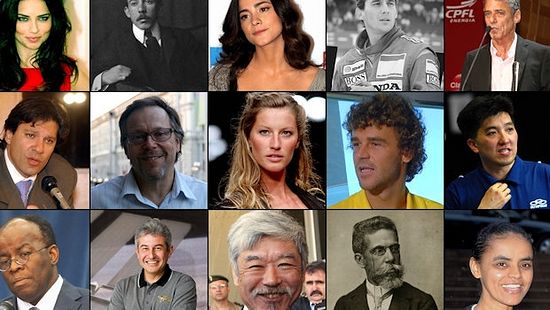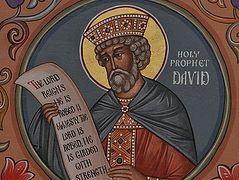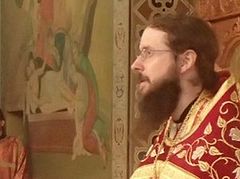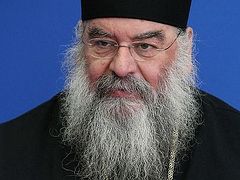Source: Orthodox Christian Network
November 2, 2015
”When Christ unites us, distances don’t exist.” (St. Porphyrios the Elder) These words were spoken years ago by one of the spiritual giants of our age, St. Porphyrios the Elder of Kafsokalyvia (1906-1991), who was added to the canon of saints of the Holy Orthodox Church on December 1, 2013. As I was reading about his life and his teachings in the popular book Wounded by Love, I was struck by the simplicity yet depth of such a truthful statement. We are often preoccupied and saddened by the thought of loved ones being so far away from us in physical distance. We always wish to live close by those whom we admire, be they family or friends. Yet in our Lord Jesus Christ, who encompasses all of humanity — indeed, all of the cosmos — in His loving embrace, He breaks down not only the barrier of death but space and time. This means that by the grace of the Holy Spirit, events of the past and events of the future, together with saintly figures and angels, become fully present and effectual in the “here and now.” So, the Last Supper is celebrated at every Divine Liturgy and we faithful Orthodox Christians living in 2015 sit at the same table as Jesus’ disciples, receiving the same Eucharistic Bread and Chalice as the rest and receiving the exact same sanctification, made accessible in proportion to our faith.
St. Symeon of Thessaloniki (+1429), the last great mystagogical commentator on the Divine Liturgy, wrote: “Through this sacred sacrifice, both holy angels and men together have been united to Christ, and in Him have they been sanctified and they unite us to Him.” The Greek text follows: “Τῇ θυσίᾳ ταύτῃ τῇ ἱερᾷ, πάντες ὁμοῦ ἄγγελοί τε καὶ ἄνθρωποι ἅγιοι ἠνώθησαν τῷ Χριστῷ, καὶ ἐν αὐτῷ ἠγιάσθησαν καὶ τούτῳ ἡμᾶς ἑνοῦσιν.” [Περὶ τῆς Θείας Μυσταγωγίας (On the Sacred Liturgy) § 94; PG 155.281B]. The Archbishop here is referring to the completed service of the Prothesis, in which the celebrant deposits the Lamb and the particles for the saints and angels, together with the crumbs commemorating the living and dead, upon the holy diskos. The diskos and chalice are then placed upon the holy altar table to become consecrated and transformed into the Body and Blood of Christ. Essentially, St. Symeon indicates that sanctification from God occurs through Christ’s sacrifice in a “downward spiral.” The holy angels and saints are imbued with power from on high because they are united spiritually to the risen Christ Himself. Christ lives and moves among them, and through them, we have access to the same sanctifying grace of the risen Lord Jesus.
This powerful image of acquiring holiness and divine power is synonymous with receiving and being received by the eternal and inexhaustible God Himself. Christ can never be fully depleted or erased because He is not bound by space or time. He is fully accessible to each one of us who believes and communes His precious Body and Blood. Hence, the natural boundaries of the world are suspended and removed when we walk and have our being in God, whose life force frees us even in this life from the limitations that constrict our ability to truly be what God created us and called us to be. In other words, when we are permeated by God’s grace like the holy angels and saints, and become His earthly ambassadors, we no longer live in the world and are bound by it; the world lives in us and is bound by us. Since God is greater than life, and if God abides in us, then we become, in effect, greater than life itself!
Many of you have certainly noticed a particular endearing icon of Christ welcoming the children of the world into His arms. In a sense, we can say that this particular icon is asynchronous in that it does not reflect a historical reality: Christ holds in his arms children from other countries and nationalities; they are not young Jews living in the first century. Nevertheless, in keeping with St. Porphyrios’ teaching, in Christ, barriers of all sorts are broken and the nations of the world come together in a unity that only Christ can achieve. Distance, physical and ideological, is eradicated. The children are drawn closer to each other as they draw near to Christ, for Christ becomes the common denominator of all humanity, a humanity that is fulfilled and exalted when it is assumed by the One who not only created it but became one with it. In approaching perfect humanity, we ourselves become perfected … but never alone or apart from the others whose journeys are identical to ours.
In Christ, as we all draw closer to Him, we see how the diversities that make each of us unique bring out the beauty in us all as we move toward our common purpose — to become one with our Lord. In the journey toward Christ, we cannot help but witness the beauty of diversity in unity. But the beauty can only be witnessed if we are all moving in the same direction, that is, toward God. If someone different from us is fighting us and God, he is obstructing the process of unity and proves himself to be a diverse individual who chooses to remain diverse ideologically and spiritually, all the while working against his own humanity and never realizing his full potential as a human being created in the divine image and likeness (Genesis 1:26).
There is, however, another distance that faith in Christ helps us to minimize and eradicate completely — our distance from our true selves. Without a solid foundation in Christ, we maintain proximity to a “version” of ourselves that we are convinced by the dark powers is sufficient, perfect, and justifiably independent. We become not what God wants us to be, God-centered and God-focused, but what the demons desire us to be, self-centered and self-focused, like themselves, never seeking the gifts of the Spirit, such as “love, joy, peace, long-suffering, kindness, goodness, faithfulness, gentleness, and self control” (Galatians 5:22,23), but seeking only our personal whims that are onto embarrassment and destruction. Without Christ in our lives, we are nowhere near our true selves; we must return back and retreat into the recesses of our hurting heart and there rediscover the pristine beauty that was once ours, as the Prodigal Son had done when he “came back to himself” (Luke 15:17) and repented and returned back to his father, which was a personal homecoming for him, a return home to where he needed to be.
So my dear people, our differences in life should not be viewed as obstacles but as opportunities to celebrate our uniqueness by sharing the same journey toward Christ. Any journey toward Christ brings people together in the proper spirit of Christian fellowship and exposes our diversities in the most beautiful of ways. Any journey away from Christ forces diverse people even further way from each other, as each seeks to follow a path leading to isolation and ultimately to non-fulfillment and personal destruction. In Christ, sadnesses are transformed into joys, time into eternity, and separation from others and ourselves into a wholesome unity.
We need not turn further away than the media to witness the fragmented lives people live around us, near and far. Fear, uncertainty, anger, violence — all of these negative conditions are indications that man has departed from a healthy relationship in God, which has driven him far away from a respectful vision of his neighbor and himself. The famous adage rings clearly here: “Know Christ, know peace. No Christ, no peace.” And the peace is first and foremost the internal peace we need to function well in life, to be happy, to feel fulfilled, and to fulfill our destiny.
Let us give ourselves a gift that we deserve: let us open our hearts to Christ and receive Christ … so that we may come back to God, so that we may come back to our fellow man, so that we may come back to ourselves. And let us celebrate the beautiful diversity that shines when our unity in God is realized, when we become what we were intended to be from the beginning — “gods” recreated in the image of our one true God and Father. Amen.




